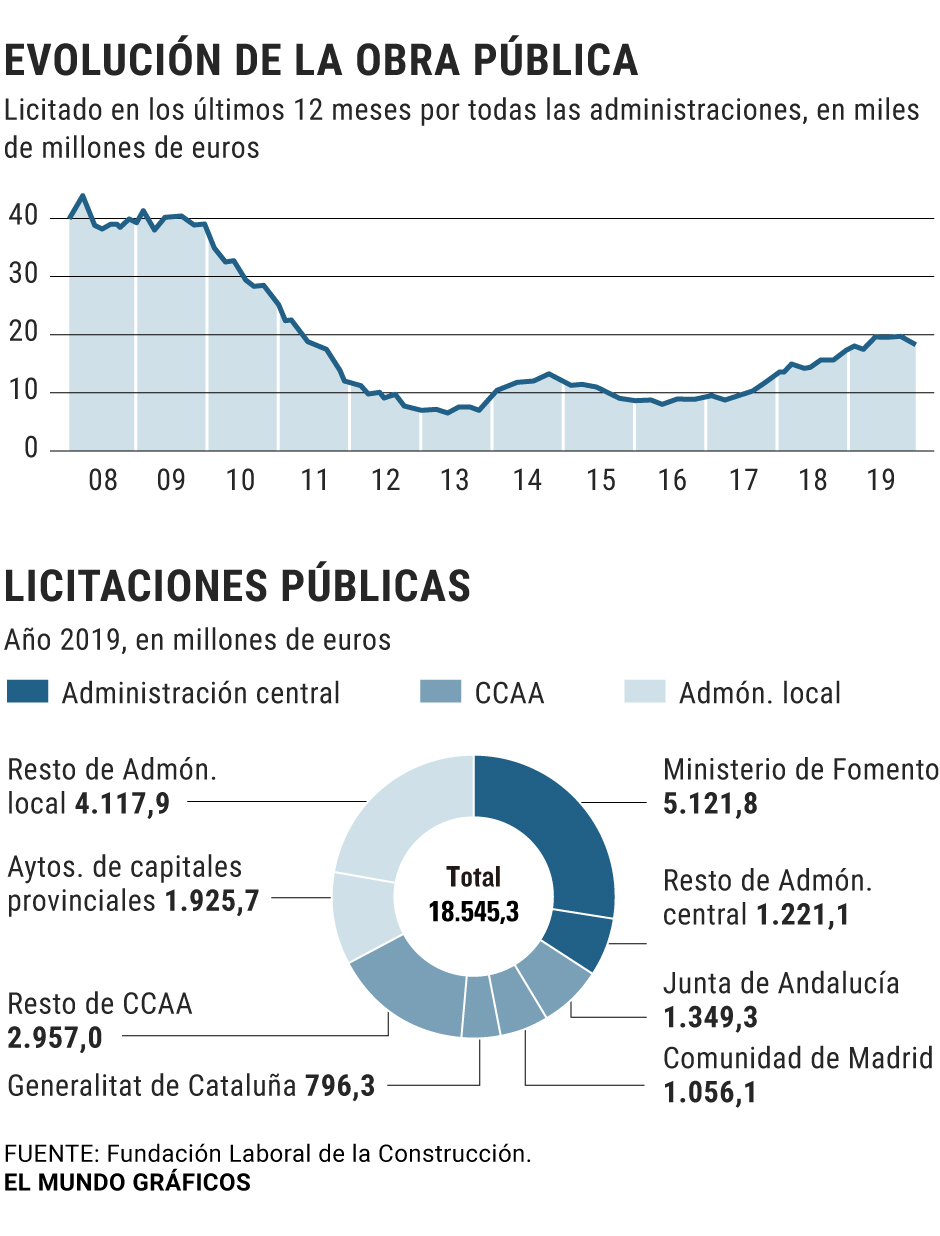The construction sector, one of the traditional pillars of employment in Spain, has more serious problems than overcoming the hangover of a crisis that has reduced its level of activity. Overcoming the adjustment of more than one million jobs applied between 2008 and 2014 , companies that carry out projects and tenders find that, in a country with more than three million unemployed and the second highest youth unemployment rate in the Union European, its workforce ages to unimaginable levels a decade ago.
Today, almost one in three workers (31%) in the sector is over 50 years old, while those hired with less than 30 years have gone from being one in four in 2008 (25%) to not representing even one tenth (9%) , according to data from the National Statistics Institute (INE) collected by the Construction Labor Foundation.
At the end of 2019, the sector occupied 1.3 million people, 56,000 more than the previous year, in a progress that has been constant since in 2014 this activity is considered as an advanced indicator of the dynamics of the economy, hit bottom and start recovery . The figure remains, however, 48% below the volume of employment that it generated in 2008. When the sector was the undisputed king of the Spanish labor market, he lived a frantic activity that allowed him to employ 1.2 million more Workers you hire today.
Aging has occurred because of the jobs destroyed and not recovered, just over half a million correspond to employees with less than 30 years. It is precisely in the age range between 25 and 29 years where the bleeding has been greater, with 289,000 fewer workers . Meanwhile, at the other extreme, the process has been very different. Although today workers between 50 and 59 are 27,000 less than in 2008, their weight over the total number of employed persons by age has doubled , going from being 14% of the workforce in the boom times to be 25% today, a rate equivalent to what all workers under 30 years of age became in the last decade. The most surprising fact that the INE figures show is that the construction labor market preserves its workload for those who are of retirement age and beyond. Today and in terms of people hired, the workforce of 65 to 69 years is the same as it was before the crisis and those hired with more than 70 years grow, going from 900 to 1,200.
Enrique Corral, director of the Labor Foundation for Construction, points out that the sector now has a bad image among the younger workers who associate it with weather, physical effort and salaries that are no longer what they came to be in boom times of the construction. "The services sector, which has lower salaries, captures younger people," he explains. "The consequences are many but there are projects that cannot be undertaken due to lack of qualified personnel and companies are forced to bid to hire good specialized workers," he says.
With a registered unemployment of more than 260,000 people for the whole construction, it is difficult to understand the aging of the workforce of an activity that last year increased by 12% the value of tenders with the public sector, up to 18,500 million euros, according to data of the employer of the sector, Seopán. In contrast, the activity in residential building, which started 2019 strongly, ended up far from the 150,000 homes that the most optimistic forecasts had initially raised.
Even so, the lack of generational change and qualification in the sector remain problems that gain weight in the sector. Jobs such as mason, formwork or construction manager are the most demanded by companies looking for personnel to execute projects. The specialization makes tasks such as the placement of stone in buildings lead companies to have these workers among the most quoted for contracts both inside and outside Spain. In a sector that in addition to the crisis has seen changes in both the use of materials and techniques, Corral indicates that the current lack of skilled labor has one of its bottlenecks in which the decade that has elapsed since the outbreak broke out. bubble and that up to 25% of the offers of this type of jobs remain unfilled .
According to the criteria of The Trust Project
Know more- INE
- Spain
- European Union
- Unemployment
EPA QUARTO TRIMESTREEPA bittersweet for Sánchez: 402,300 jobs are created in 2019, but it is the lowest figure since the recovery
Macroeconomics The IMF warns of obstacles between regions: "Spain is not a single market"
The Board relates the rise in unemployment with the increase in the minimum interprofessional salary

